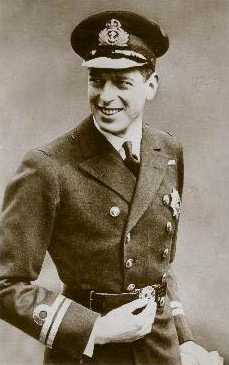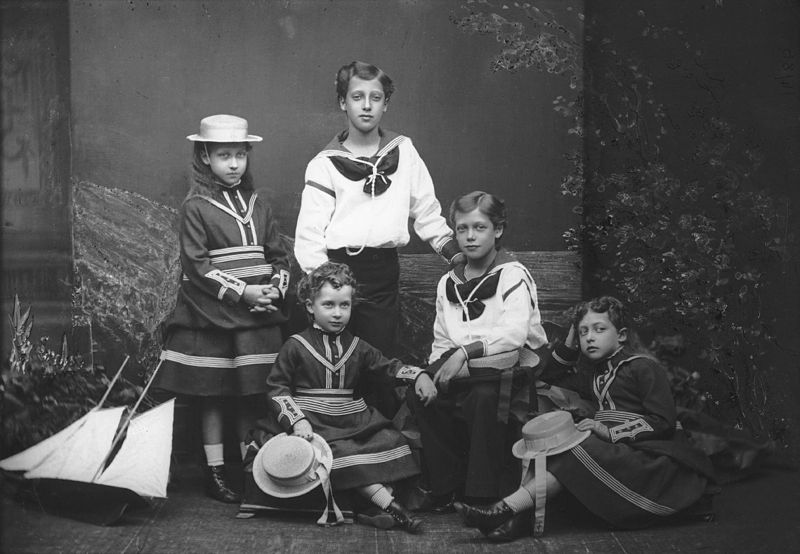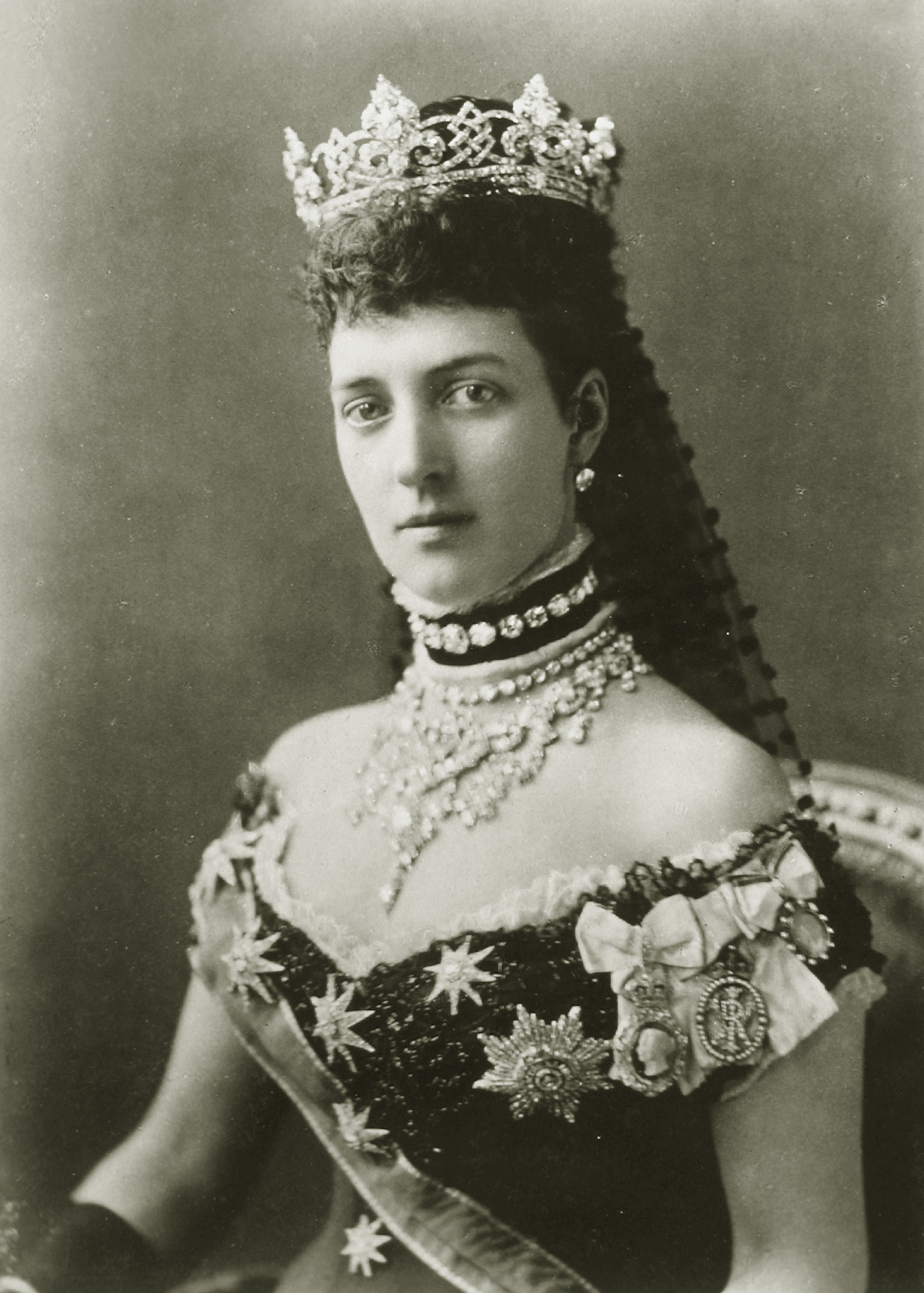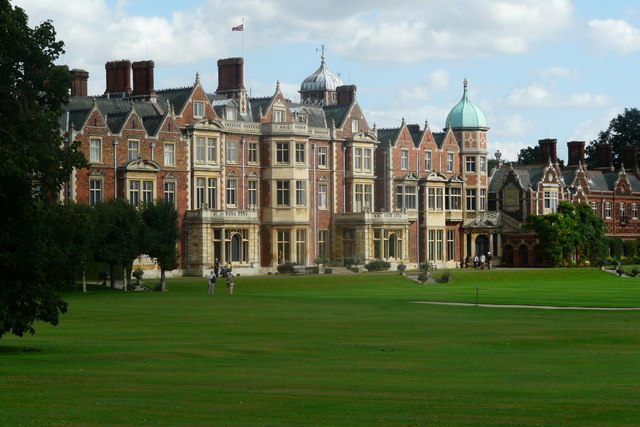by Scott Mehl © Unofficial Royalty 2014

Prince George, Duke of Kent – photo: Wikipedia
Prince George, Duke of Kent (born George Edward Alexander Edmund of Wales) was the fifth of six children of the future King George V of the United Kingdom and Queen Mary, born Princess Victoria Mary of Teck. He was born on December 20, 1902, at York Cottage on the Sandringham Estate in Norfolk, England. He had five siblings:
- King Edward VIII (Duke of Windsor after his abdication) (1894-1972), married Wallis Simpson, no children
- King George VI (1895-1952), married Lady Elizabeth Bowes-Lyon, had two daughters
- Mary, Princess Royal (1897-1965), married Henry Lascelles, 6th Earl of Harewood, had two sons
- Prince Henry, Duke of Gloucester (1900-1974), married Lady Alice Montagu-Douglas-Scott, had two sons
- Prince John (1905-1919)
Prince George was christened on January 26, 1903, in the Private Chapel at Windsor Castle. His godparents were:
- King Edward VII (his paternal grandfather)
- Queen Alexandra (his paternal grandmother)
- Dowager Empress Maria Feodorovna of Russia (his paternal great-aunt, born Princess Dagmar of Denmark)
- Prince Valdemar of Denmark (his paternal great-uncle)
- Prince Louis of Battenberg (husband of his father’s first cousin, later 1st Marquess of Milford Haven)
- Princess Helena (his paternal great-aunt)

Prince George (front, right) with his siblings, 1910. Wikipedia
George’s education began privately at home, and then he attended St Peter’s Court Preparatory School in Kent. He then attended the Royal Naval College at Osborne, and later at Dartmouth, and served in the Royal Navy until 1929. He then became the first member of the British Royal Family to work as a civil servant, taking up positions in the Foreign Office and then the Home Office.
In August 1934, Buckingham Palace announced the engagement of Prince George to his second cousin, Princess Marina of Greece (both were great-grandchildren of King Christian IX of Denmark). They married at Westminster Abbey on November 29, 1934, followed by a Greek Orthodox service in the Private Chapel at Buckingham Palace. This would be the last time a foreign princess married into the British Royal Family. The month before the wedding, Prince George was created Duke of Kent, Earl of St Andrews, and Baron Downpatrick.
The couple had three children:
- Prince Edward, Duke of Kent (born 1935), married Katharine Worsley, had two sons and one daughter
- Princess Alexandra of Kent (born 1936), married The Honorable Angus Ogilvy, had one son and one daughter
- Prince Michael of Kent (born 1942), married Baroness Marie-Christine von Reibnitz, had one son and one daughter
In 1937, George was given a commission as a Group Captain in the Royal Air Force (RAF). In 1938, he was appointed to become the next Governor-General of Australia, beginning in November 1939. However, the appointment was postponed due to the outbreak of World War II. The Duke of Kent returned to active military service, working briefly in the Intelligence Division of the Admiralty. In 1940, he transferred to the RAF. By then he’d been elevated to the rank of Air Vice-Marshal, but voluntarily relinquished the rank and reverted to Group Captain so as not to outrank more experienced officers. He worked as a Welfare Officer, part of the Inspector General’s staff. In this role, he traveled extensively, visiting troops and facilities to help boost morale.
It was on one of these trips, that Prince George’s life would come to an end. On August 25, 1942, just six weeks after the birth of his youngest child, George boarded an RAF flying boat in Scotland, headed for Iceland. Sadly, the plane crashed near Dunbeath, Caithness in Scotland, killing all except for one person aboard. The Duke of Kent was just 39 years old. There is much speculation as to the nature of this trip. While officially it was a standard visit to troops in Iceland, there are allegations and suggestions that it was a “secret mission”. The Duke’s body was found with a briefcase handcuffed to his wrist, full of 100 kroner notes. These had no value in Iceland at the time. The Duchess of Kent met several times with the lone survivor over the years, allegedly trying to find out why her husband had died. See Unofficial Royalty: Tragedy in the British Royal Family at the End of August (scroll down).
The Duke of Kent’s funeral was held at St George’s Chapel, Windsor Castle, and his remains were placed in the Royal Vault there. Following his wife’s death, almost exactly 26 years later, his remains were moved to the Royal Burial Ground at Frogmore in Windsor, England, where his beloved Marina was then buried by his side.
This article is the intellectual property of Unofficial Royalty and is NOT TO BE COPIED, EDITED, OR POSTED IN ANY FORM ON ANOTHER WEBSITE under any circumstances. It is permissible to use a link that directs to Unofficial Royalty.




























